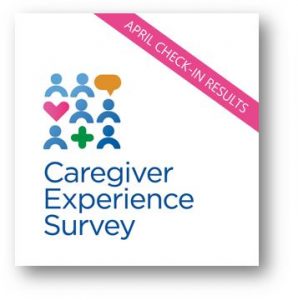 At our IS Q2 town hall on June 4, Adam Dial, SVP of Community Technologies, and one of our exec champions of IS Caregiver Engagement, shared that we had just received our updated results from the Willis Towers Watson Regional Trends Survey (formerly known as the Pulse Survey).
At our IS Q2 town hall on June 4, Adam Dial, SVP of Community Technologies, and one of our exec champions of IS Caregiver Engagement, shared that we had just received our updated results from the Willis Towers Watson Regional Trends Survey (formerly known as the Pulse Survey).
For our IS core leaders, we wanted to share the results and let Adam circle back with some early conclusions and next steps.
First, some facts about the survey:
• The Regional Trends Survey (RTS) is meant to be a quick check-in across a sample of our division designed to ensure we are tracking in a positive direction in several key areas.
• The survey went to about a third of our caregivers.
• 687 caregivers responded (75% response rate).
• Core leaders with more than five responses have received their own individual reports.
The first thing you’ll see in the survey is a segmentation of caregivers into 4 categories: Highly Engaged, Unsupported, Detached and Disengaged. The first two are positive, the latter are not.
The survey covers a number of areas, including:
• Identifying with our mission and our values
• Belief in the objectives of the organization
• Intent to stay with the organization
• Department is able to meet work challenges effectively
• Meeting the promise of “Know me, care for me, ease my way”
History across many industries shows that, to achieve a transformative vision, organizations must have highly engaged employees. To that end, our goal is to improve our Highly Engaged statistics from 41% to greater than 46% during a year of transformation and change. This report shows us that while we have some positive signs, we have quite a bit of work to do to achieve that goal.
Positive takeaways
• 75% response rate was exceptional.
• Our caregivers are inspired by our mission and willing to go above and beyond to achieve it.
• Caregivers are generally proud of our organization and intend to stay.
Where do we need to improve?
• Our caregivers are not comfortable that we can consistently deliver in alignment with our mission and values.
• They are inspired by our IS vision, but don’t always feel they have what they need to get there.
• Survey follow up is not evident.
Adam shares, “As I review the sustainable engagement stats, I see that there are a number of previously Highly Engaged caregivers who have moved to Unsupported since our last survey. I suspect that folks can see the vision starting to take shape, but don’t feel they have what they need to get there. We must work together to help our team members along the way to achieve our goal of 46% highly engaged. As a core leader, it is your intervention that we need to act as leaders at the forefront more than ever in times of change.”
Call to action for IS core leaders:
• Take a few minutes to review the IS-wide survey results.
• If you received your own results, review them.
• Ask your leader and peers about the results.
• Share the results with your team and get feedback. What can we do to move the needle with our caregivers, peers and colleagues?
• Share that feedback with others and your leaders. It will light the path to improvement.
Thank you for your leadership. An IS-wide Caregiver Engagement survey (not a sample like the RTS) will occur in July. This will provide us all another opportunity to check in on how we are tracking towards improved engagement.
Resources
Spring 2019 IS Caregiver Engagement Regional Trends Survey results summary
We’ve also compiled a core leader deck to use with teams, sharing key slides and infographics that we’ve shared in town hall and Open Forum, but wanted to centralize for you to help answer questions and share our IS direction with teams.
